NENDO-MICHI of JIN KATAGIRI ~NIPPON local the soul of clay -Another edition-~
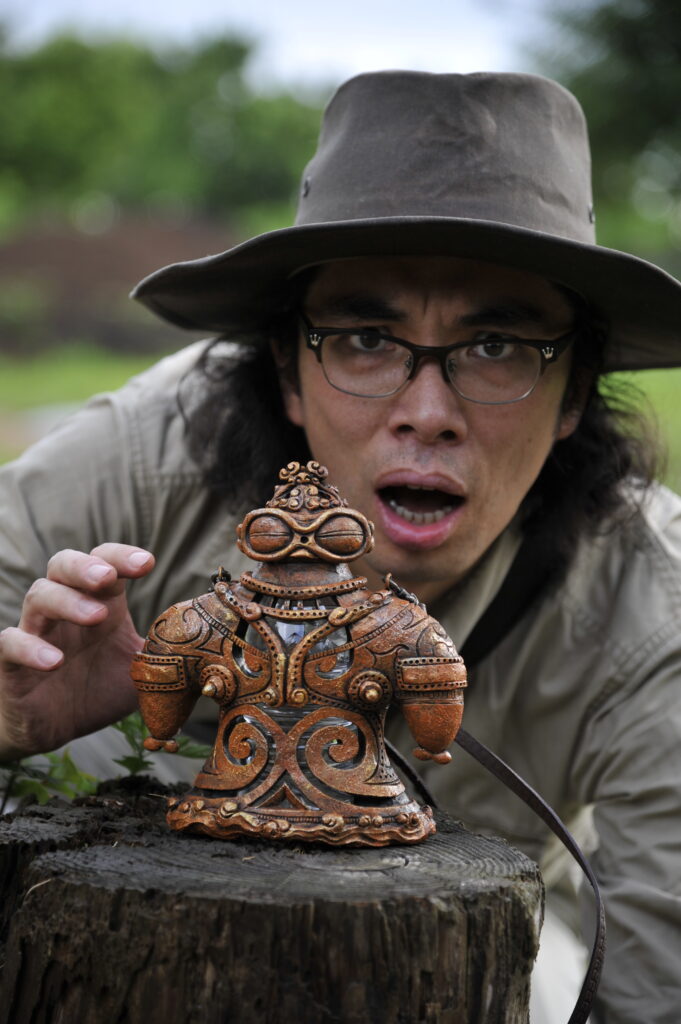
法量 縦×幅×奥行=195×175×60(mm)
材料 エポキシパテ、スカルピー、スタイロフォーム、革紐
Legal amount : height×width×Length=195×175×60(mm)
Materials : Putty, Sculpey, Styrofoam, leather cord
記念すべき”土偶シリーズ”の第一弾です。
2011年に青森県さんに招待していただいて、県内各地の縄文遺跡や博物館を案内していただきました。三内丸山遺跡の規模の大きさにビックリしたり、是川縄文館でたまたま火焔型土器や、動物形土製品を見ることが出来て感動しました。埋没林やキリストの墓、酸ヶ湯温泉も良かったな〜。で、その際、「土偶をモチーフに作品を作ってください」という発注を受けたので、迷わず『遮光器土偶』を選びました。木造駅の巨大な遮光器土偶の駅舎も見ましたね。
This is the first in a series of commemorative “clay figurines”. In 2011, I was invited by Aomori Prefecture to take a tour of Jomon sites and museums around the prefecture. I was surprised by the scale of the Sannai-Maruyama Ruins, and impressed by the Jomon Vessel with Flame-like Ornamentation and animal-shaped earthenware products I happened to see at Korekawa Archaeological Institution (Korekawa Jomon Kan). The buried forest, the tomb of Christ, and the hot spring of Sukayu were also nice. At that time, I was asked to create a work with a clay figurine as a motif, so I chose “Shakoiki-Dogu” without hesitation. I also saw the giant clay figurine at Kizukuri Station.
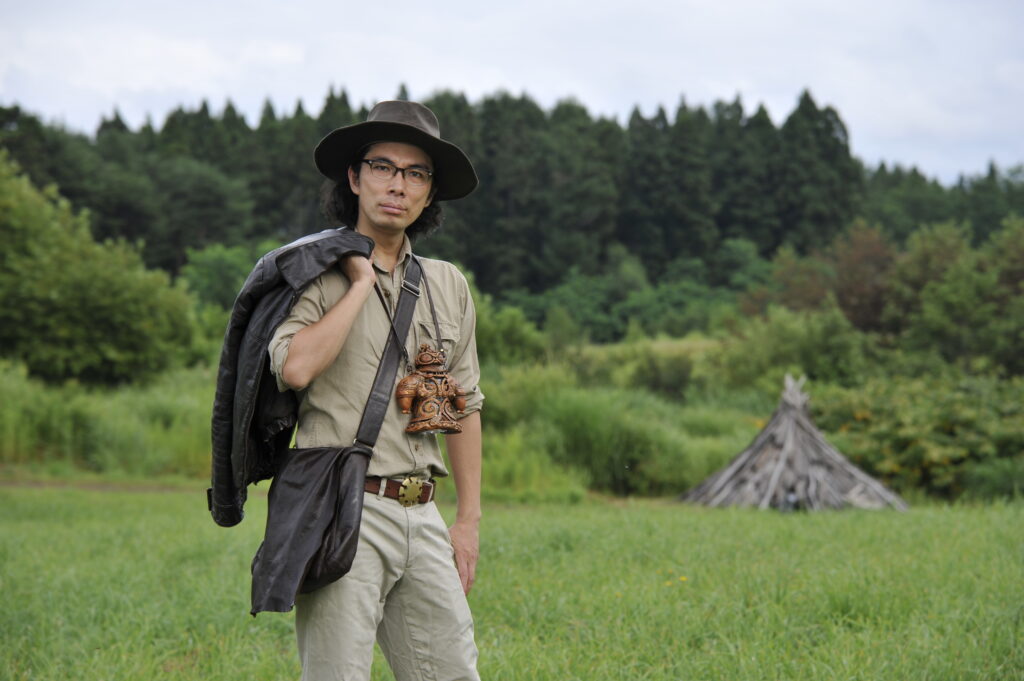
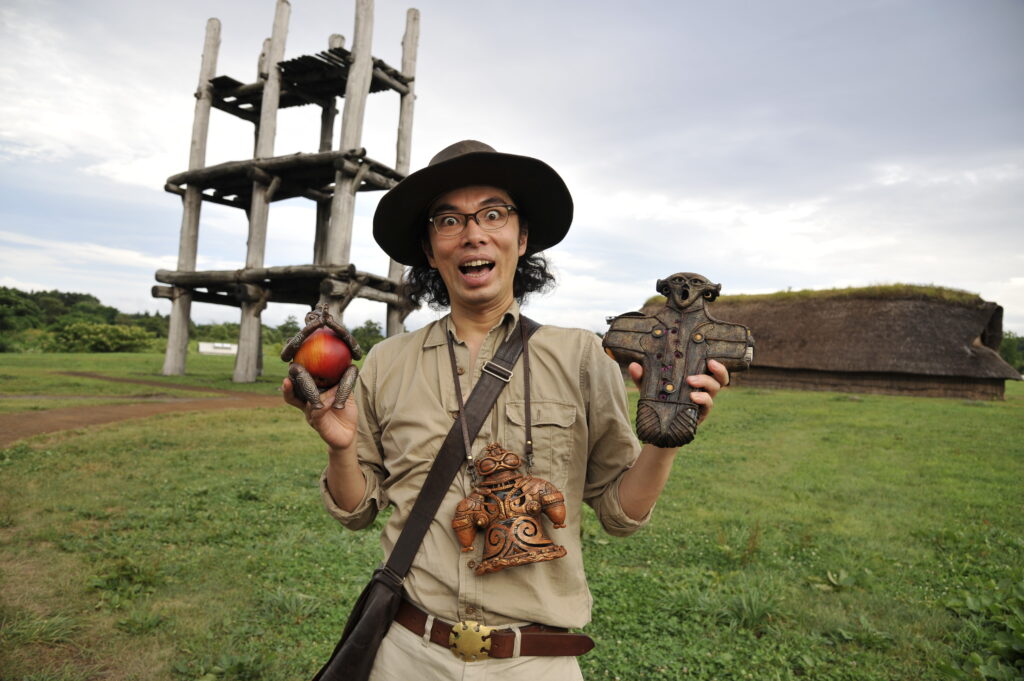
キッカケは忘れましたが、1990年代に流行った『エビアンホルダー(革紐でできたエビアンを首からぶら下げて水筒代わりにする、謎の道具。保温性ゼロ。ハンドスピナーのごとく、あっという間に見なくなった)』を思い出して、あれと土偶を組み合わせよう!と思いつきました。
でも、いざ「自分だけの土偶を作ろう!」と、土偶の資料を見ていたら、そのあまりの独創性に、「これをオリジナルにアレンジ出来る気がしない!というか、そのまま作りたい」と思うようになり、ペットボトルは仕込みましたが、外観は出来る限り『亀ヶ岡遺跡』の遮光器土偶そのまま模刻しました。素材は違うけど、縄文時代の土偶作りを追体験してるみたいな感覚になりましたね〜。
I don’t remember how it all started, but in the 1990’s, there was a fad for “Evian holders” (a mysterious tool to hang a leather strap Evian around your neck to use as a water bottle. No heat retention, like the hand spinner, it disappeared from sight in a flash. It reminded me of that, and I thought, “Let’s combine that with a clay figurine!
However, when I decided to make my own clay figurine and looked at the materials on clay figurines, I was so impressed with the originality that I thought, “I don’t think I can arrange this in an original way! I want to make it just as it is,” so I prepare the plastic bottle, but the exterior was copied as much as possible from the Shakoki-Dogu from the Kamegaoka Site.
The materials were different, but I felt as if I was reliving the making of clay figurines in the Jomon period.
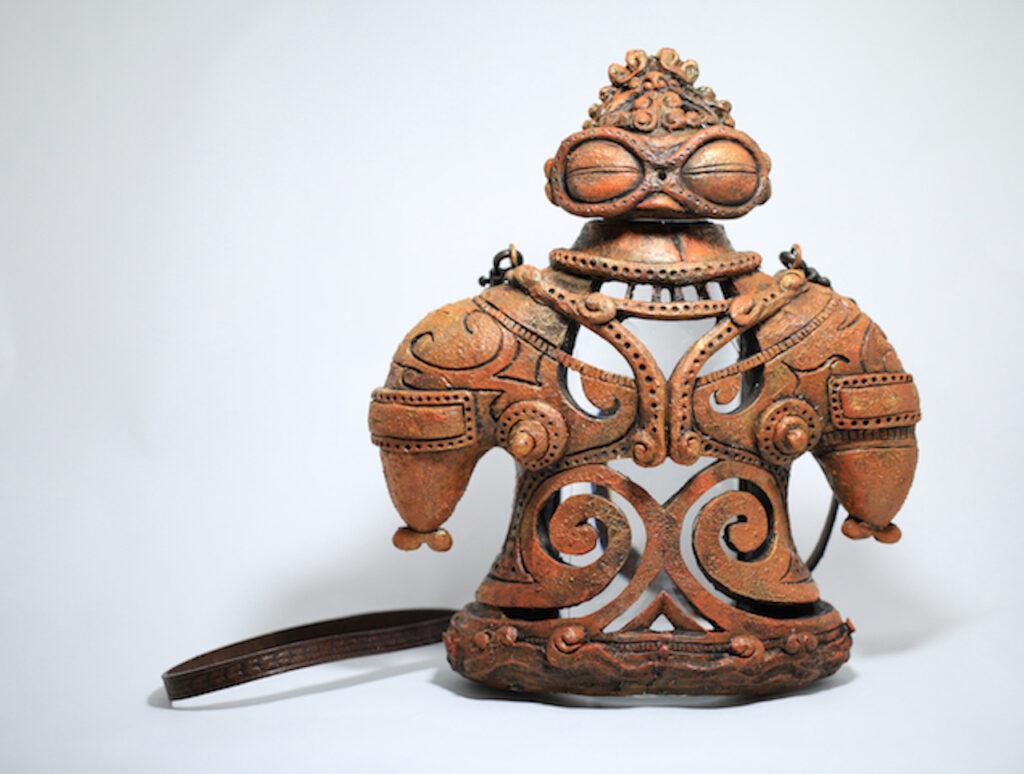
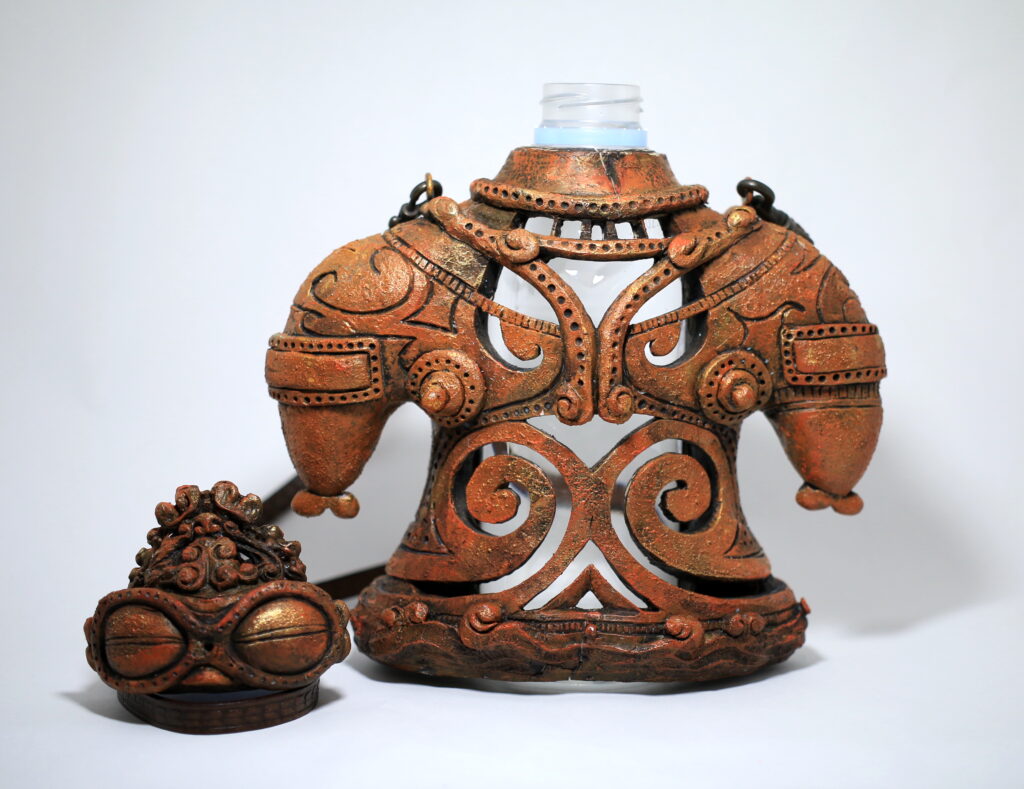
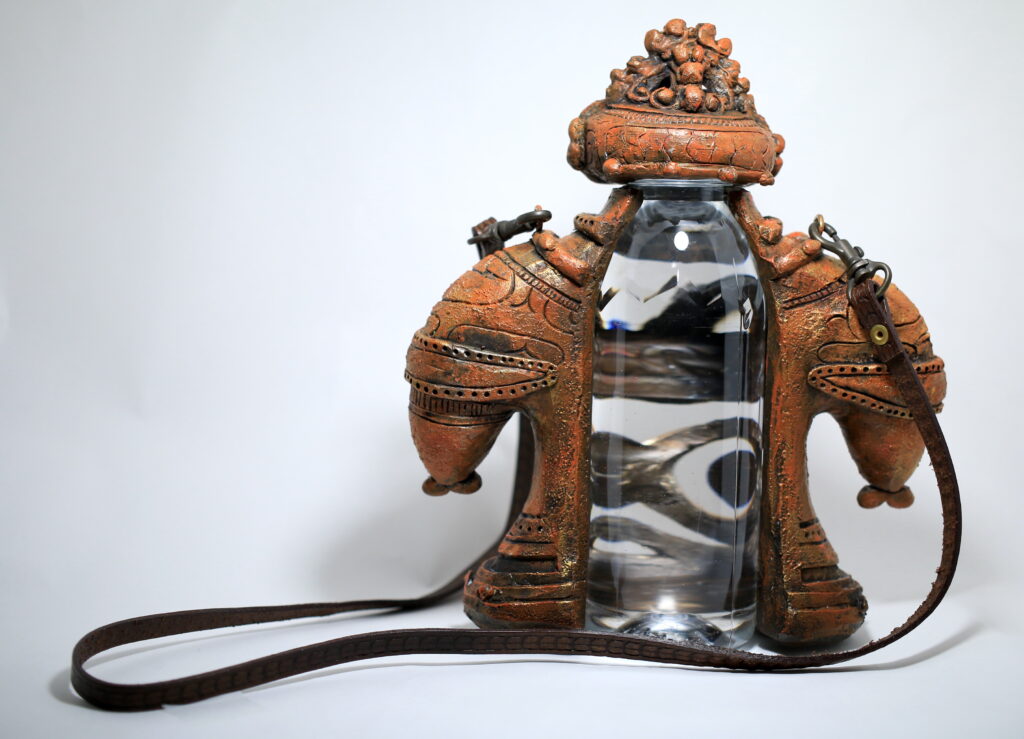
模様が微妙に左右非対称だったり、ラインの繋がりに西洋的でも東洋的でもない独自のルールがあることに気づいたり、作ってみないと分からないことが沢山ありました。あと、足を付けなかった理由は特にないのですが、「なん足がついていない?」と聞かれたら「あんなの飾りです。偉い人にはそれが分からんのですよ」と説明してます。
There were many things that I couldn’t understand until I made it, such as the subtle asymmetry of the pattern, and the realization that the connection of the lines had its own rules that were neither Western nor Eastern. Also, there was no particular reason why I didn’t put feet on it, but when people asked me, “Isn’t there something with feet on it?” I would say, “That’s just a decoration, the big people don’t understand that.”
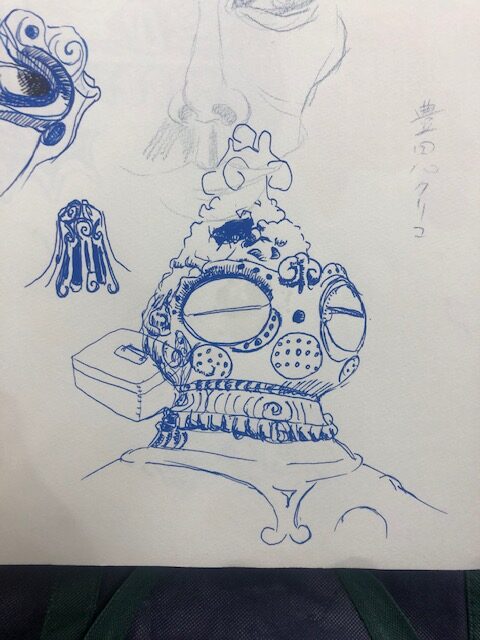
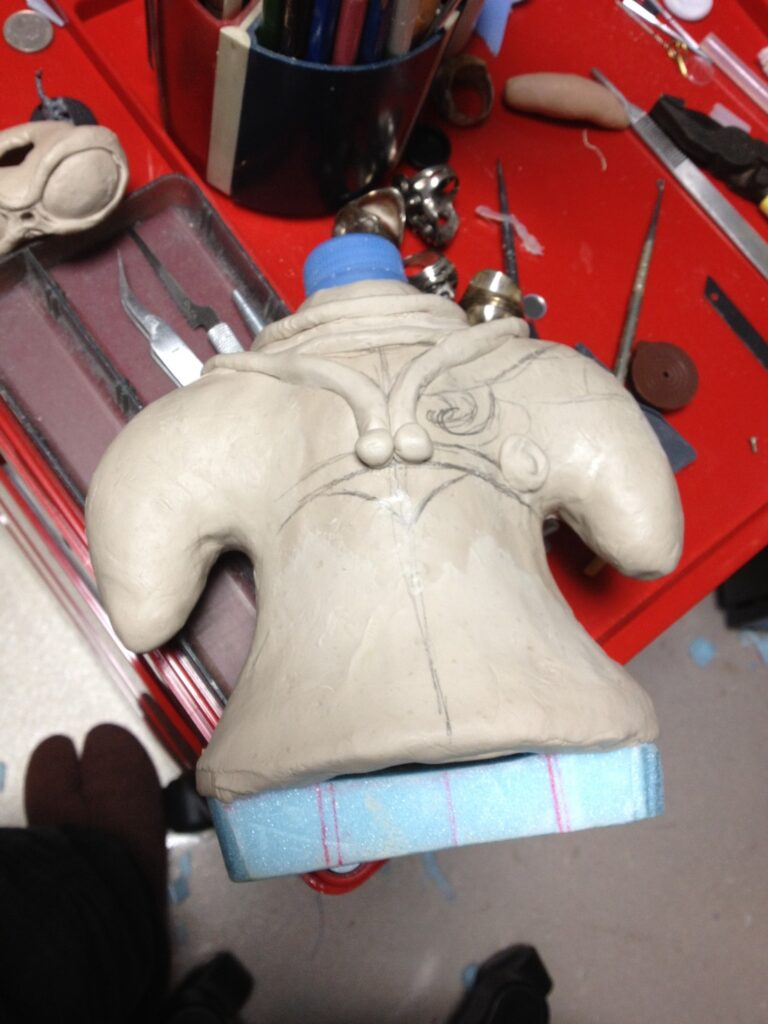
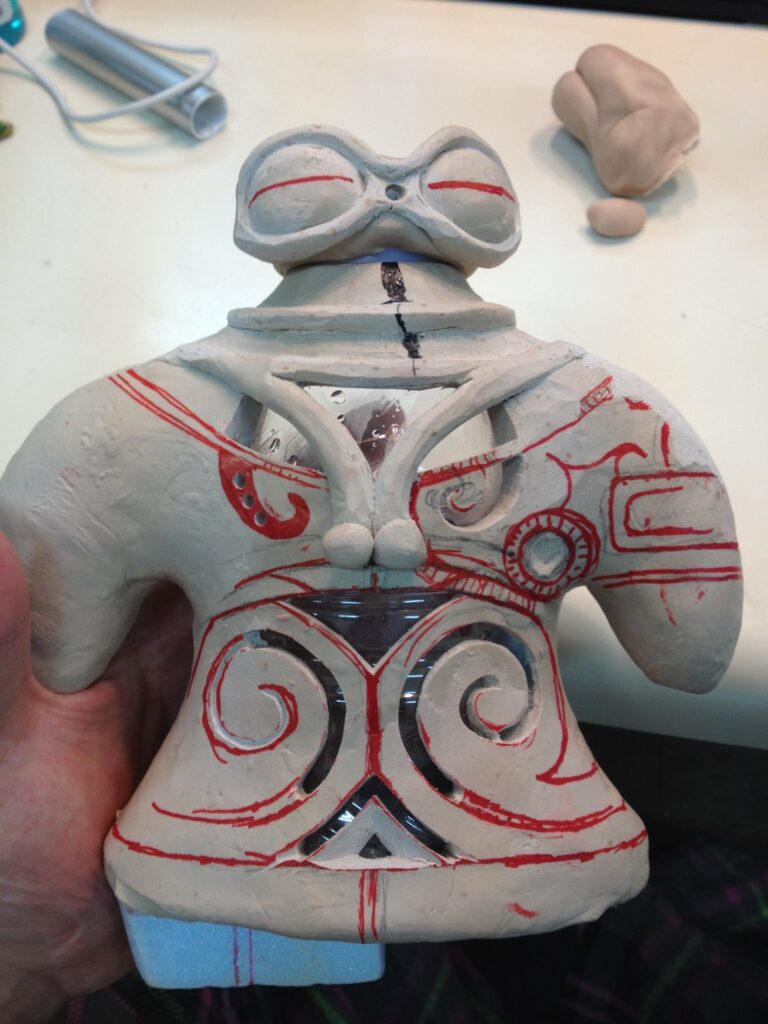
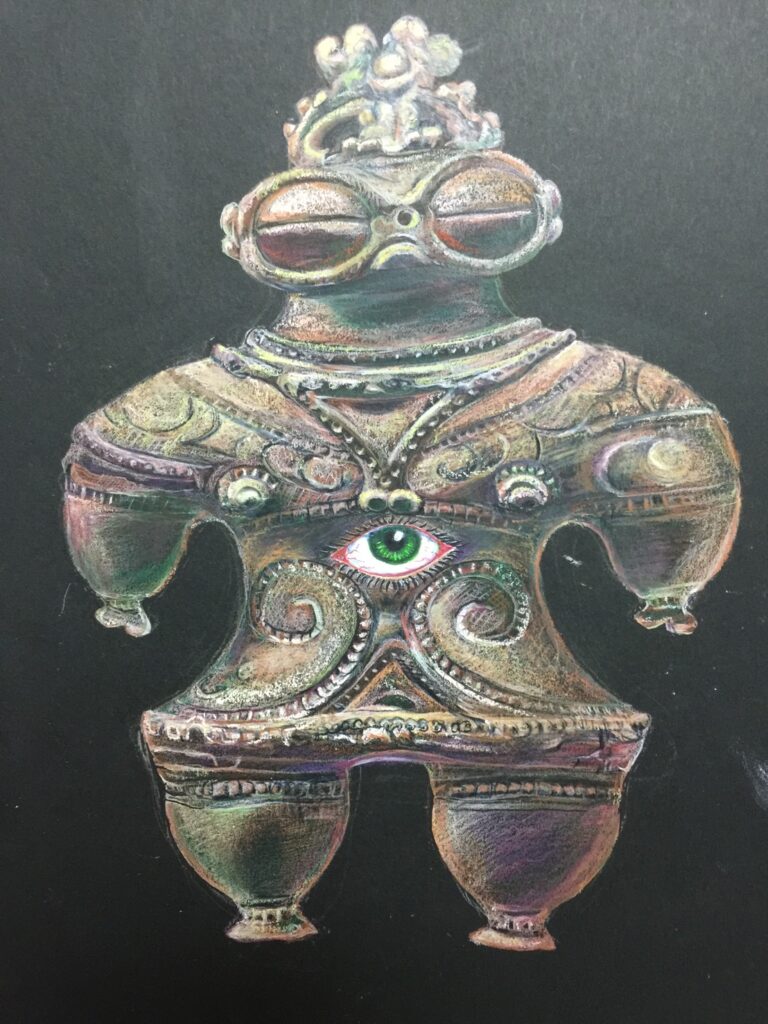
完成後、青森に持っていったら、青森県の皆さんにものすごく評判が良かったですね〜。「これ商品化しましょう!」みたいな話はいっぱい出たんですが、なかなかうまく行かなかったんです。2019年に台湾で個展をやった時、クラウドファンディングの返礼品で、このペットボ土偶をついにソフビ化しました。なので、今は自由な色に塗れます! あと、今のエビアンは当時とボトルのデザインが変わってしまったので、最新型用に修正しました。
When I took it to Aomori after it was completed, it was very well received by the people of Aomori Prefecture. We had many ideas like, “Let’s commercialize this!”, but they didn’t go very well. When I had my solo exhibition in Taiwan in 2019, I finally made a soft vinyl version of this PET Bottle in DOGU as a crowdfunding gift. So now I can paint it any color I want! Also, the bottle design of the current Evian has changed since then, so I modified it for the latest model.
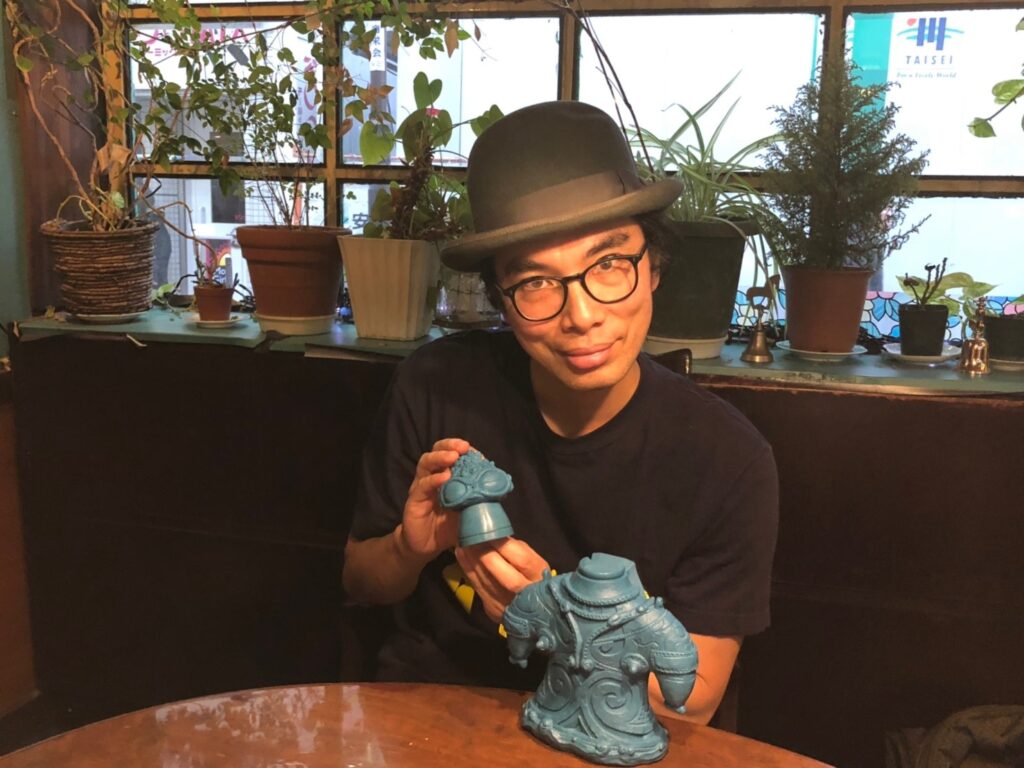

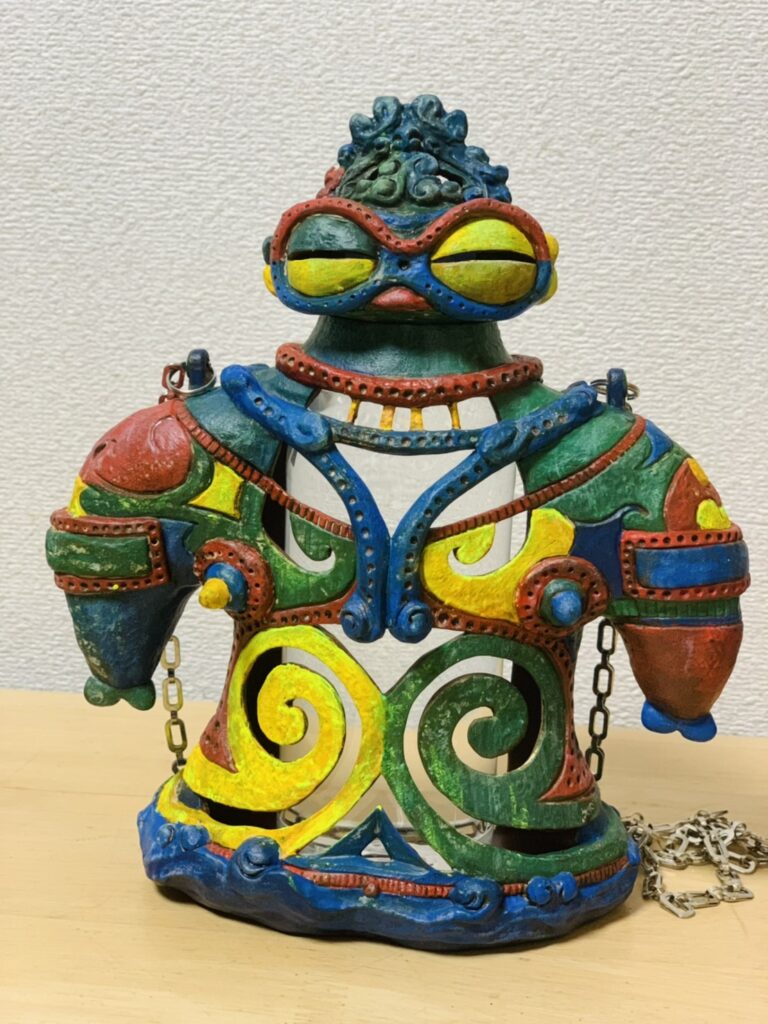
この作品を作るまで、そのまま作ってしまうと「自分だけのオリジナルじゃないんじゃないか?」とか思って視野が狭くなってたんですが、この作品を作ってみて自分の作品の可能性が広がった気がします。そして縄文が大好きになりました。
Until I made this piece, I thought that if I just made it as is, it would not be my own original work. But after making this piece, I feel that the possibilities for my own work have expanded. I also came to love Jomon.
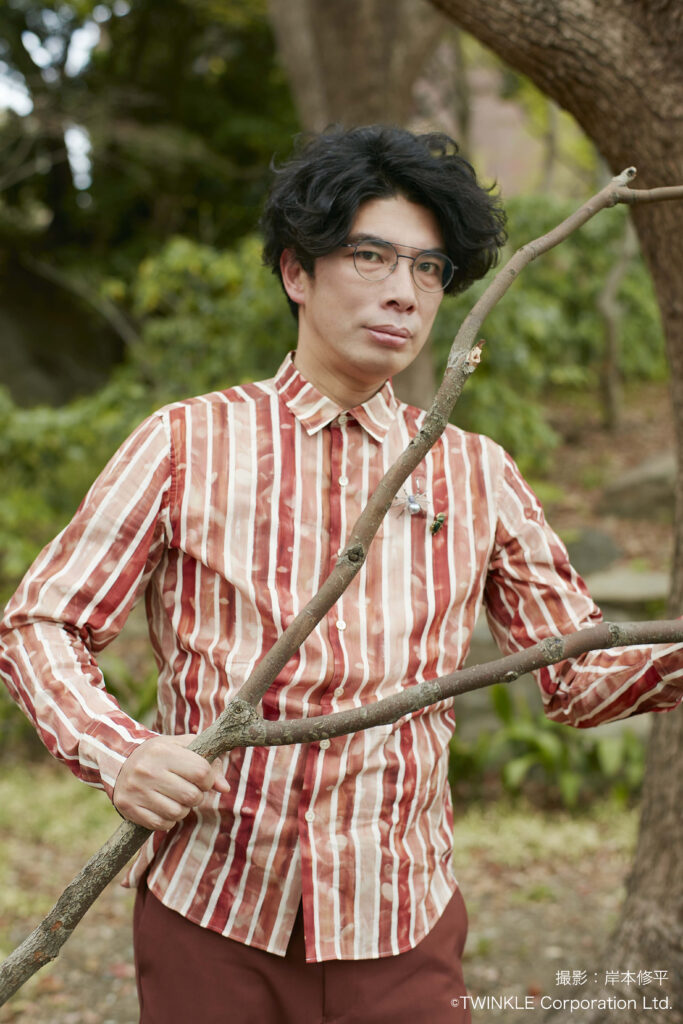
片桐 仁
1973年11月27日生まれ / 埼玉県出身 / 多摩美術大学卒業
ドラマを中心に舞台、映画、ラジオなどで活躍中。近年の主な出演作は「99.9%-刑事専門弁護士-」(TBS)、「あなたの番です」(NTV)、「NHK 連続テレビ小説 エール」(NHK)などがある。
俳優業の傍ら粘土創作活動も行い、2016年から2018年までは「片桐仁不条理アート粘土作品展 ギリ展」にて全国ツアーを開催。2019年は初の海外個展を台湾で開催している。
Jin Katagiri
Born November 27, 1973 / Born in Saitama Prefecture / Graduated from Tama Art University
Active in the stage, movies, radio, etc., mainly in TV dramas series. Major appearances in recent years include “99.9% -Criminal Lawyer-” (TBS), “Your Turn to Kill” (NTV), and “NHK Morning drama series Yell” (NHK).
In addition to acting, he also creates clay, and from 2016 to 2018 he held a national tour at the “Jin Katagiri Absurdity Clay Art Exhibit Giri Ten.” In 2019, he is holding his first overseas solo exhibition in Taiwan.
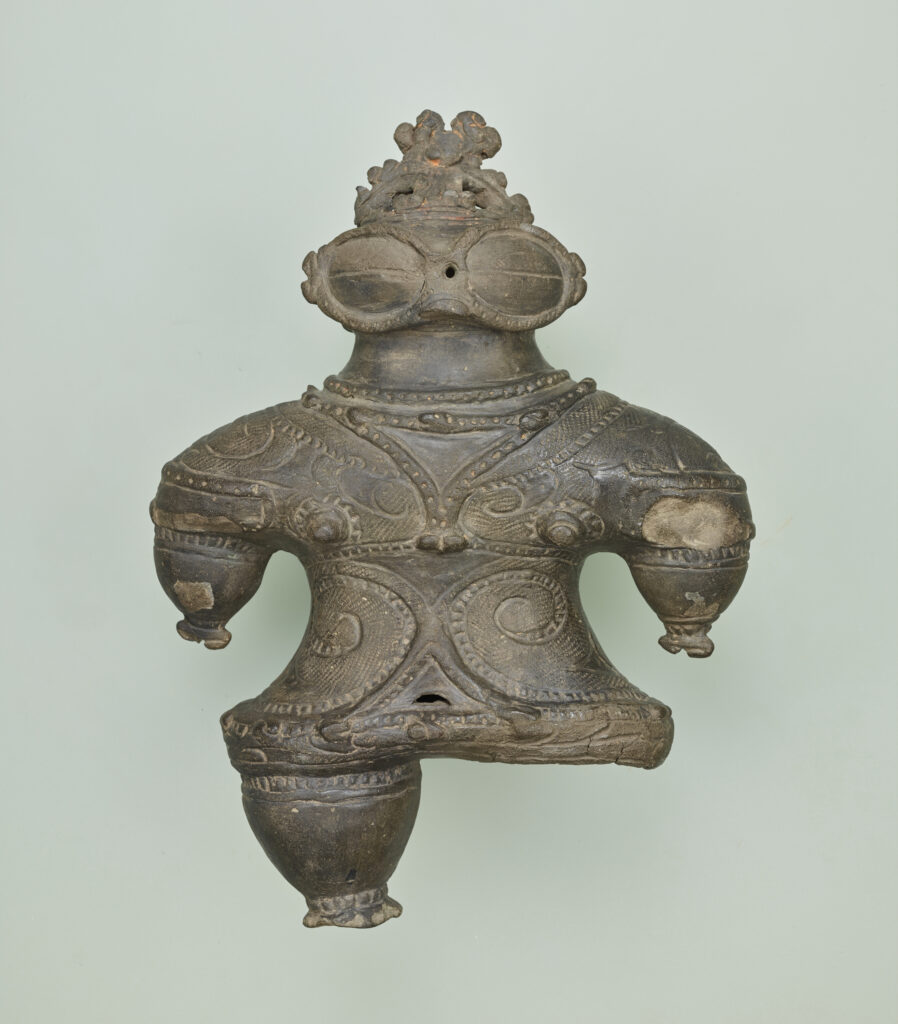
出土:青森県つがる市木造亀ヶ岡
サイズ:高さ 34.2cm
時代:縄文時代(晩期)紀元前1000-前400年
重要文化財
Excavation: Kizukuri Kamegaoka, Tsugaru City, Aomori Prefecture
Size: 34.2 cm in height.
Period: Jomon Period (Late Period), 1000 BC – 400 BC
Important Cultural Property
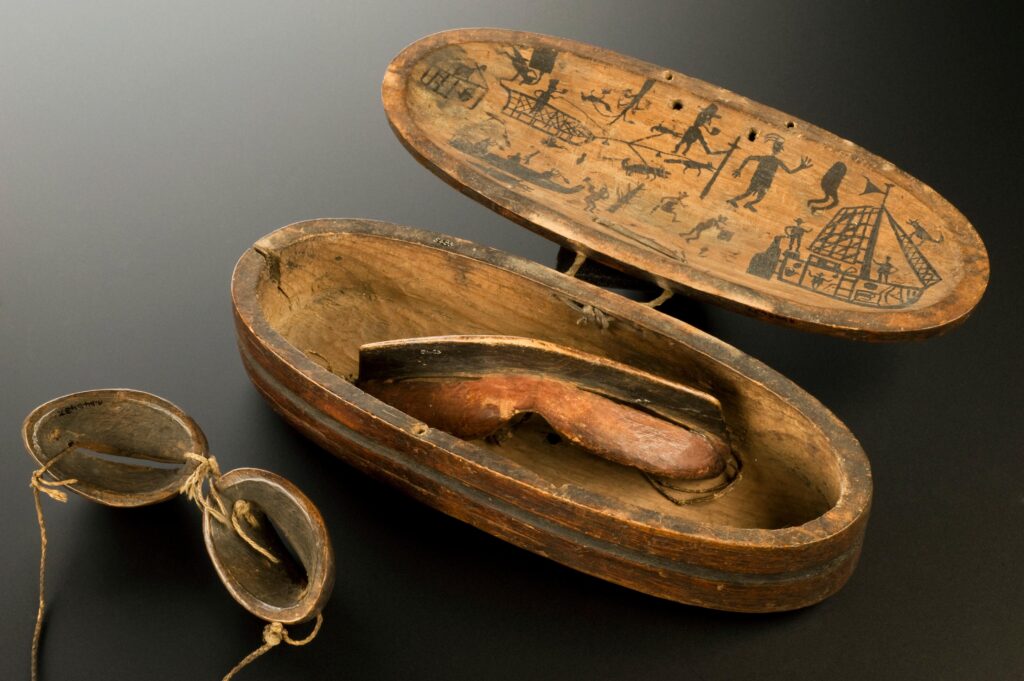
日本で最も有名で人気がある土偶の一つがこの遮光器土偶です。明治時代に発見され、独特な目の表現が雪の照り返しを防ぐ遮光器(しゃこうき)に似ていたことから遮光器土偶と名付けられたそうです。
One of the most famous and popular clay figurines in Japan is this Shakoiki-Dogu. It was discovered during the Meiji era (1868-1912), and was named after the unique expression of its eyes, which resembled those of a shakoki, a device used to block out the glare of snow.
実際は遮光器をつけているのではなく、目を誇張した表現だと考えられているようです。大きな目とは対照的に、耳、鼻、口は小さく表されています。頭などに赤い彩色が残っているのが見えますが、製作当時は全体的に赤く塗られていたようです。また、縄文時代の人々のファッションを知る材料として土偶の姿が参考にされることもあるそうです。頭にある冠のような装飾は、当時の女性が髪を結った様子やかんざしを表したと考えられていたり、首の周りの装飾は、首飾りや胸飾りを表現したといわれています。
In fact, it is thought to be an exaggerated representation of the eyes, rather than a shading device. In contrast to the large eyes, the ears, nose, and mouth are small. The head and other parts of the body are still painted in red, suggesting that the entire body was painted red at the time of production. It is also said that the figure of the clay figurine is sometimes used as a reference to understand the fashion of people in the Jomon period. The crown-like ornaments on the head are thought to have represented the way women of the time tied their hair and the hairpin, and the ornaments around the neck are said to have represented neck and breast ornaments.
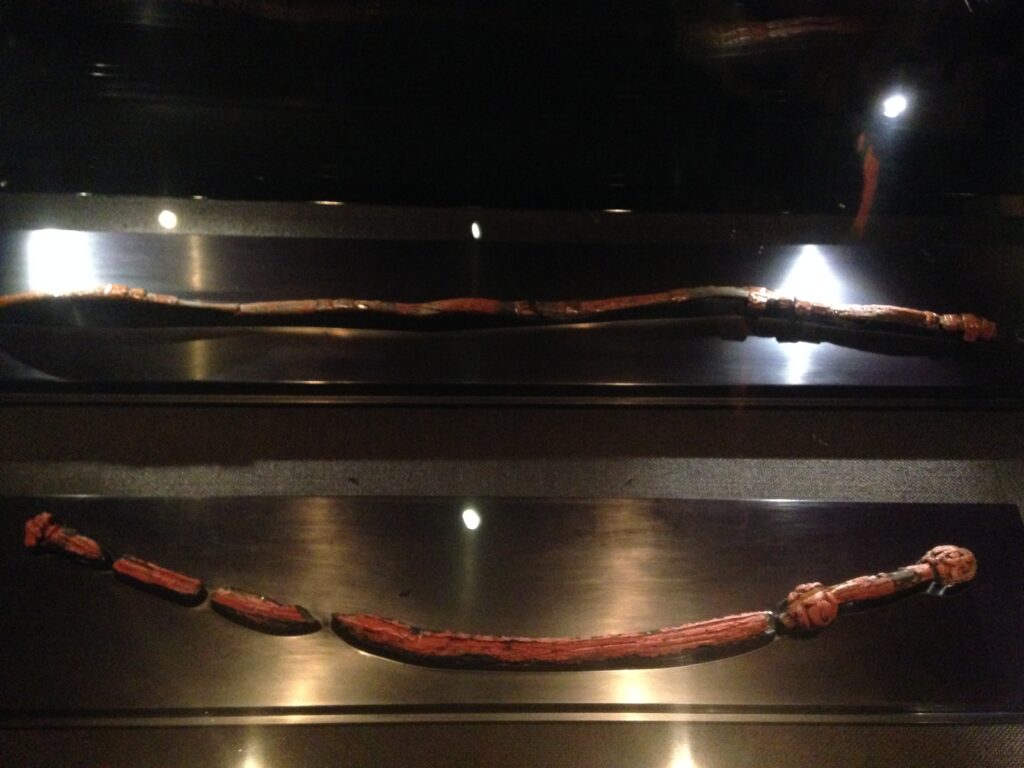
土偶は縄文時代の草創期から登場しますが、一貫して女性像として作られます。これは、女性が命を産みはぐくむことに由来し、安産、子孫繁栄、豊かな自然の恵みなどを祈る際に使われたためと考えられているからだそうです。
Clay figurines have appeared since the early days of the Jomon period, but they are consistently made as female figures. This is because they are thought to have been used to pray for safe births, prosperity of offspring, and abundant natural blessings, since women give birth to and nurture life.
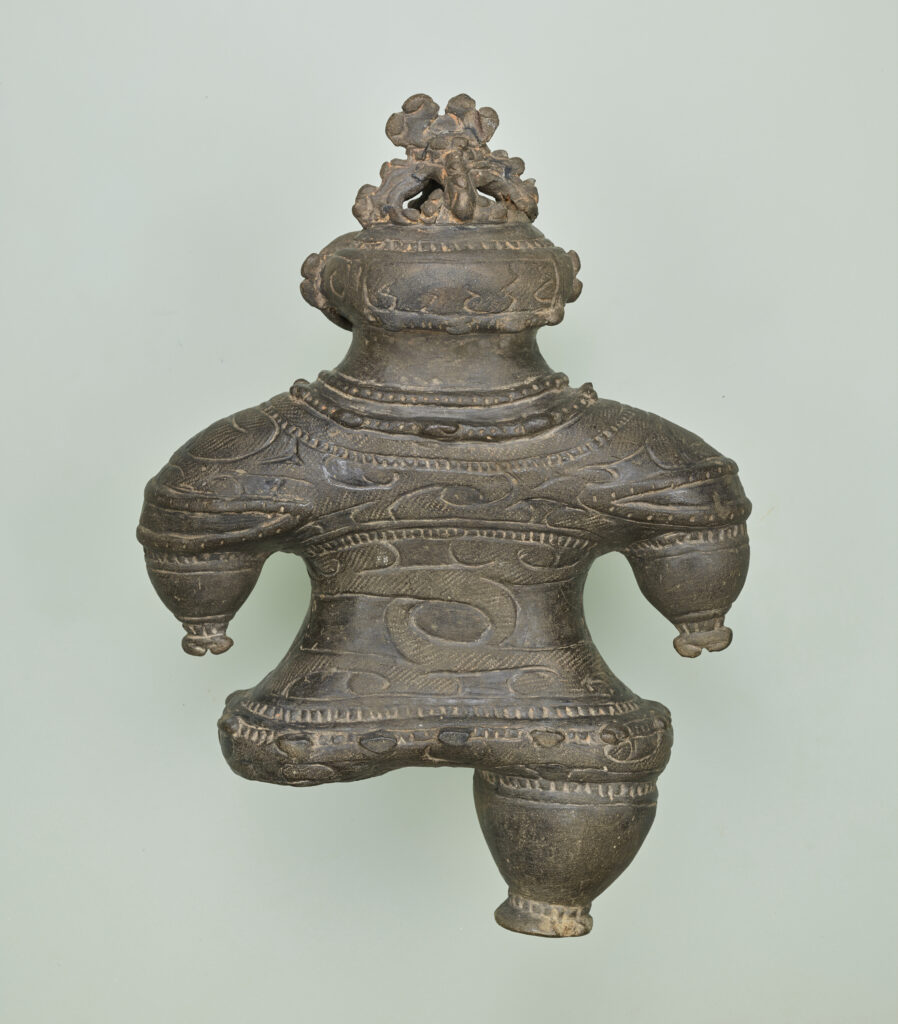
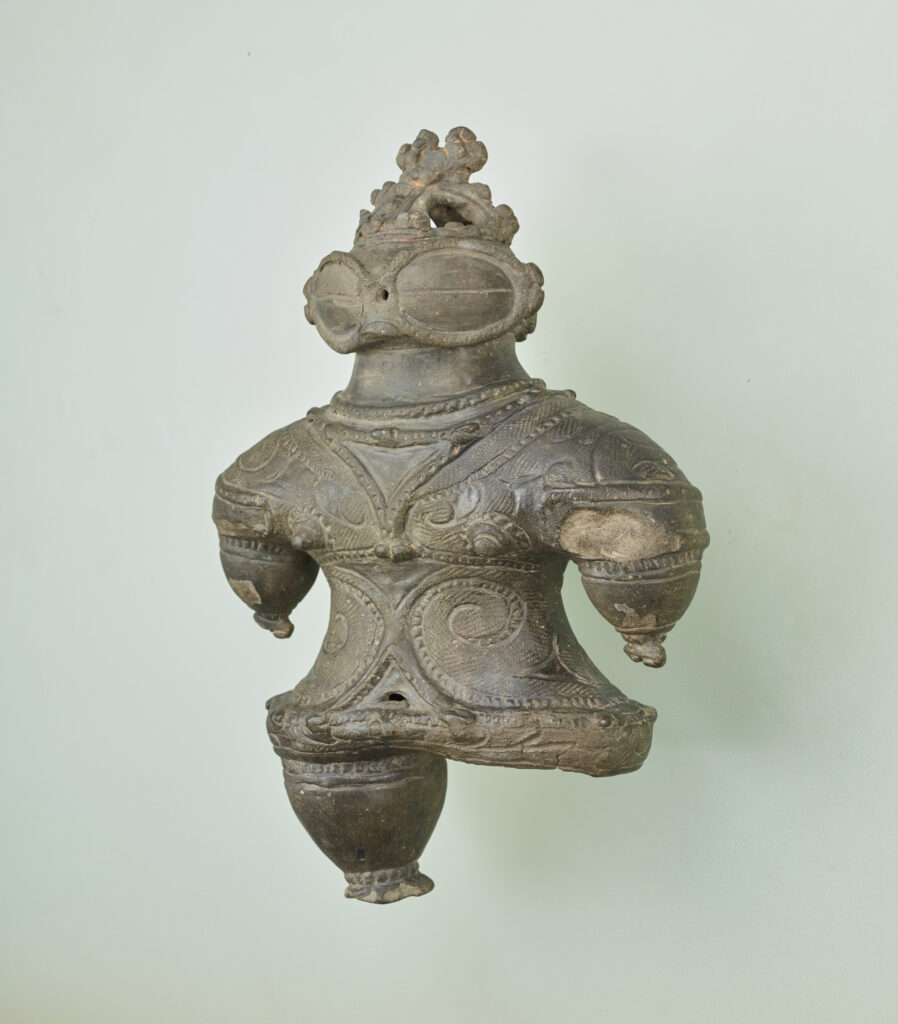
参考資料(写真含む)
出典:国立文化財機構所蔵品統合検索システム(ColBase)
日本語 / English
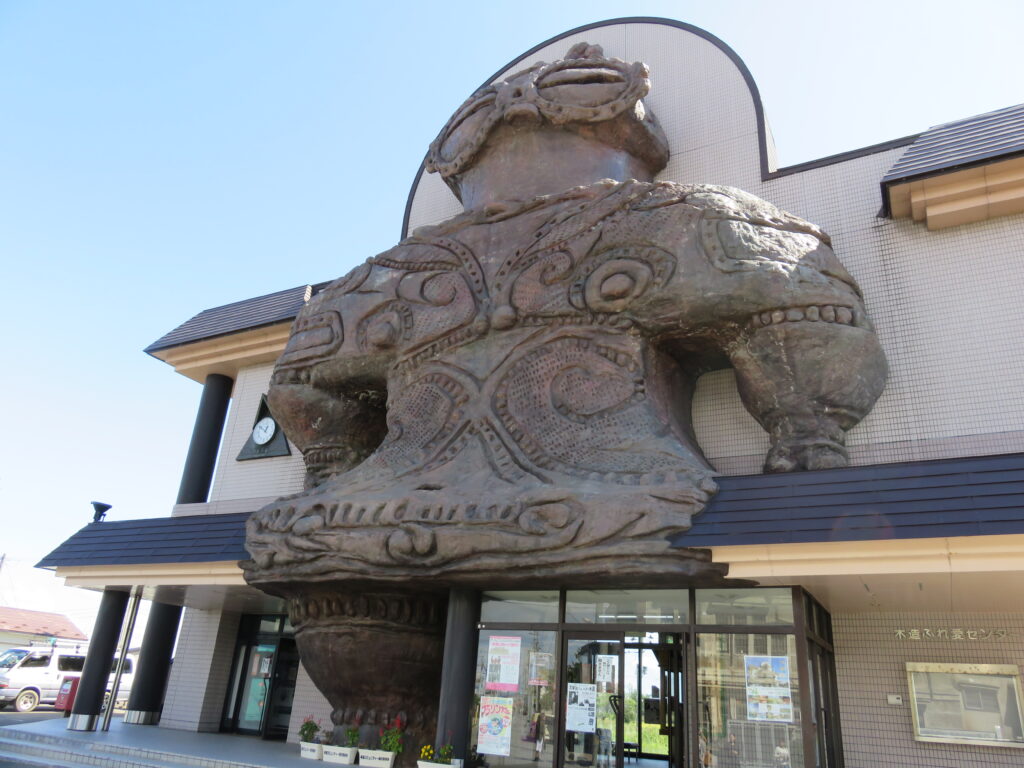

木造駅はJR五能線の駅で亀ヶ岡石器時代遺跡から出土した遮光器土偶こと“しゃこちゃん”の形をした迫力ある駅です。完成当時は、目を赤く点滅させて電車の到着をお知らせしていたそうですが、「子供が怖がる」という周辺住人の要望を受けて外部からの要請が会った時のみ点滅していたそうです。昨年、2020年春の駅改修が行われ目の光が七色に増強されたそうです。現在では列車到着時や点滅希望者が訪れるとしゃこちゃんの目が七色にピカピカと点滅しているそうです。
この木造駅は、「巨大な土偶が出迎える迫力ある駅舎」として、東北の駅百選に選定されたているとのことです。
The Kizukuri station is a powerful station on the JR Gono Line in the shape of “Shako-chan,” a Shakoki-Dogu excavated from the Kamegaoka Burial Site. When the station was completed, the eyes flashed in red to announce the arrival of trains, but they were only flashed when requested by outside parties due to requests from residents in the area who said that children would be scared. Last year, the station was renovated for the spring of 2020, and the eye lights were increased to seven colors. Nowadays, Shako-chan’s eyes flash in seven different colors when a train arrives or when someone wants to flash them.
kizukuri station has been selected as one of the 100 best stations in Tohoku as “a powerful station building with a huge clay figurine welcoming visitors.
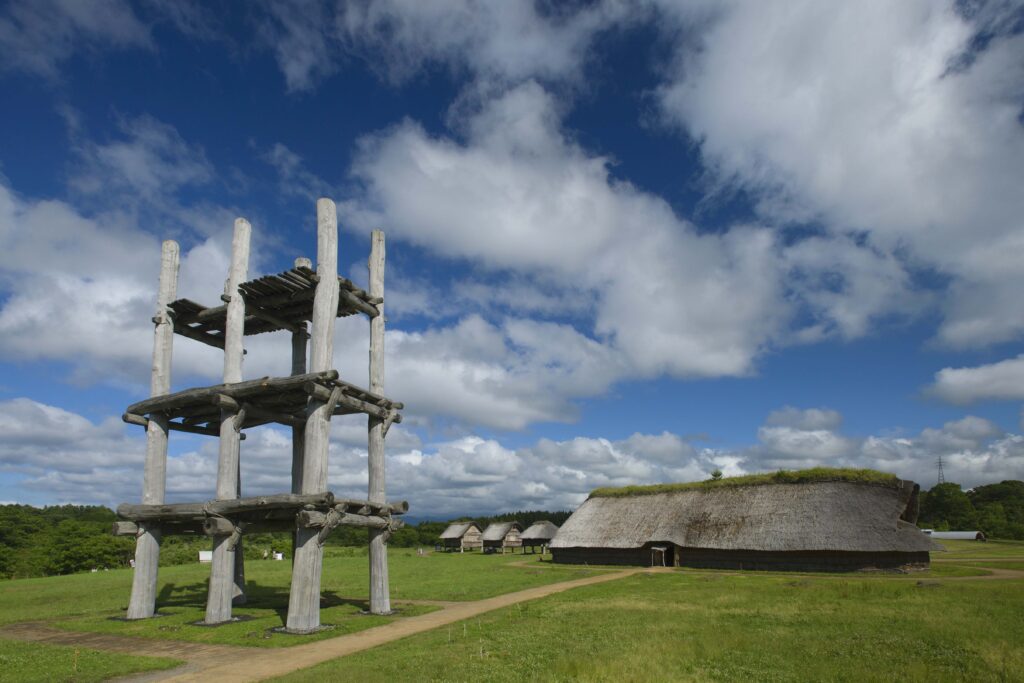
三内丸山遺跡といえば、写真(左)にある高さ約15m、直径約1mの6本柱が有名です。
この遺跡では、縄文時代前期~中期(紀元前約3,900~2,200年 現在から約5,900~4,200年前)の大規模な集落跡が見つかり、たくさんの竪穴建物跡や掘立柱建物跡、盛土、大人や子供の墓などのほか、多量の土器や石器、貴重な木製品、骨角製品などが出土。遺跡の重要性から、平成6年(1994年)に遺跡の保存を決定し、平成7年(1995年)から遺跡の整備と公開を行っているそうです。ここから出土した約2000個が重要文化財に指定されています。
The Sannai-Maruyama Site is famous for the six pillars in the photo (left), which are about 15 meters high and 1 meter in diameter.
At this site, the remains of a large settlement from the early to middle Jomon period (about 3,900 to 2,200 B.C., about 5,900 to 4,200 years ago) were found, and in addition to the remains of many pit buildings, dugout pillar buildings, embankments, and graves of adults and children, a large amount of earthenware, stone tools, valuable wood products, and bone and horn products were excavated. Because of the importance of the ruins, the decision was made to preserve the ruins in 1994, and the ruins have been maintained and opened to the public since 1995. About 2,000 pieces unearthed here have been designated as important cultural properties.
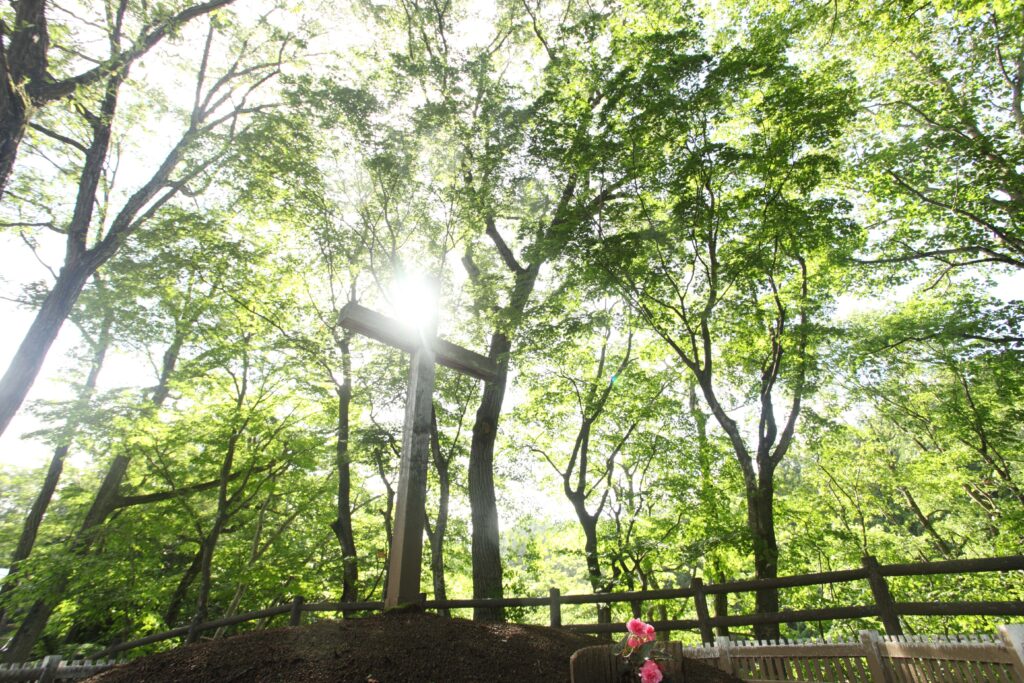
青森県三戸郡新郷村には、「ゴルゴダの丘で磔刑になったキリストが実は密かに日本に渡っていた…」そんな信じられない仮説があるそうです。昭和10年(1935年)に、茨城県磯原町(現北茨城市)にある皇祖皇大神宮の竹内家に伝わる竹内古文書から出てきたことがきっかけで、キリストの墓が発見されたそうです。1936年に考古学者の一団が「キリストの遺書」を発見したり、考古学・地質学者の山根キク氏の著書でとりあげられたりして、新郷村は神秘の村として人々の注目をあびるようになったとのことです。
In Shingo Village, Sannohe County, Aomori Prefecture, there is an incredible hypothesis that “Christ, who was crucified on Golgotha Hill, had actually secretly crossed over to Japan…”. In 1935, Christ’s tomb was discovered in the Takeuchi archives of the Takeuchi family in Ibaraki Prefecture, and in 1936, a group of archaeologists found the “last will and testament of Christ,” which was featured in a book by archaeologist and geologist Kiku Yamane. The village of Shingo has been attracting attention as a mysterious village.
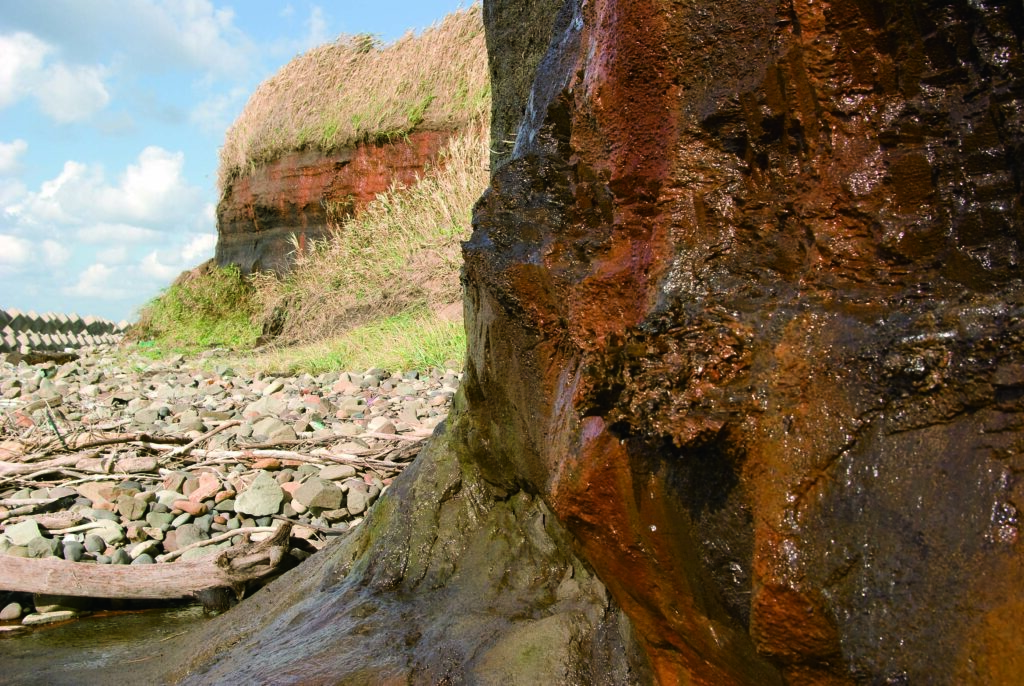
日本海に面した出来島海岸に1kmにわたって約2万5千年前の埋没林があるそうです。樹種は、エゾマツ・アカマツなどの針葉樹で、幅約30cmの泥炭層に1〜2m間隔で数千本と世界でも最大規模のものだそうです。この埋没林は氷河期後期(約8万〜1万年前)の極寒期に洪水などの急激な変化によって針葉樹林が水没し、その根が水分により、真空パックされたため腐らずに残ったものなのだそうです。
There is a 25,000-year-old buried forest that stretches for 1km along the coast of Dekijima, facing the Sea of Japan. It is said to be one of the largest such forests in the world, with thousands of coniferous trees, such as Ezo spruce and red pine, spaced 1-2 meters apart in a peat layer about 30 cm wide.The buried forest was created when the coniferous forest was submerged in water due to sudden changes such as flooding during the extremely cold period of the late Ice Age (about 80,000 to 10,000 years ago).
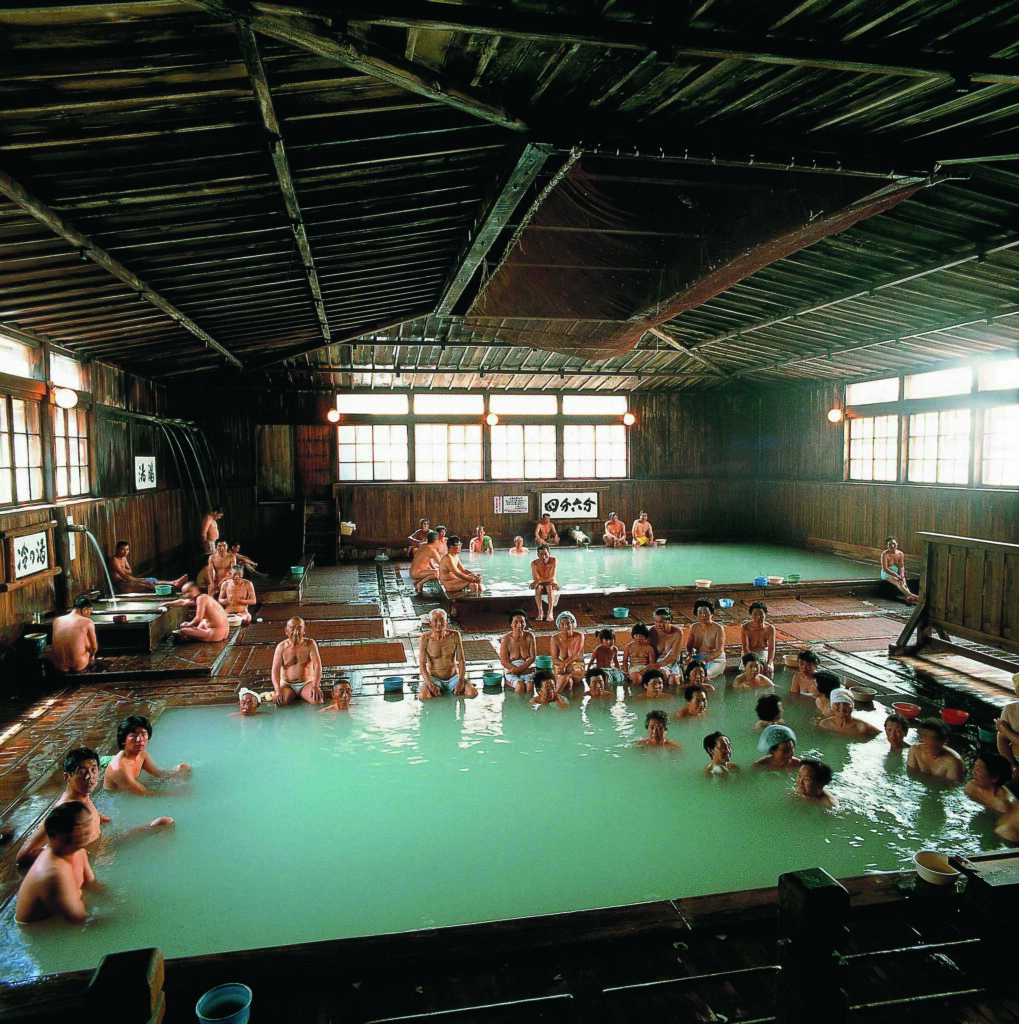
酸ヶ湯温泉にある「ヒバ千人風呂」と呼ばれる混浴の大浴場。なんと約160畳の広さがあるそうです。天井までの高さが約5mもあるそうなのですが柱が1本もないのが驚きです。
この温泉は、今から約300年前に横内(現青森市内)に住む狩人が鹿をしとめそこない、その手負いの鹿を追って山へ入った。それから3日後に発見したが、傷を負っていたはずの鹿があっという間に岩山を駆け上がり逃げ去ってしまった。その俊敏さをみて不思議に思い、付近を探索したところ温泉が湧いているのを見つけた。その後、その温泉に薬効があることを知り「鹿の湯」と名づけ利用した』という由来があるそうです。その後、酸性の強い湯であることから「酢ヶ湯」「酸ヶ湯」と名前が変化していったそうです。
A large mixed-gender bathing area called “Hiba Sennin Buro” (the 1,000 person bath) in Sukayu Onsen.It is about 160 tatami mats in size. The height to the ceiling is about 5 meters, and it is amazing that there is not a single pillar.
This hot spring was discovered about 300 years ago when a hunter living in Yokouchi ( current Aomori City) failed to stop a deer and went into the mountains in pursuit of the wounded deer. He found it three days later, but the wounded deer had run up the rocky mountain in a flash. The deer’s agility made him wonder, and when he searched the area, he found a hot spring. Later, when he found out that the hot spring had medicinal properties, he named it “Shika no Yu (Deer’s hot spring)” and used it. Later, the name was changed to “Sukayu (Vinegar hot spring)” and “Sukayu(acidic hot spring)” due to the highly acidic nature of the water.
参考資料 References
北海道・北東北縄文遺跡群について About Jomon Prehistric Sites in Northern Japan
https://jomon-japan.jp/
是川縄文館 Korekawa Archaeological Institution (Korekawa Jomon Kan)
https://www.korekawa-jomon.jp/
新郷村HP Shingo village Homepage
http://www.vill.shingo.aomori.jp/sight/sight_main/kankou/sight-christ/
酸ヶ湯温泉 Sukayu Onsen
http://www.sukayu.jp/history/index.html
はじめてペットボ土偶をみたとき、その「ぬんっ」とした表情に惚れしました。なので、ペットボ土偶のソフビが完成した時「ペットボ土偶を持ち歩けるぞ!」と思って嬉しかったです。ペットボ土偶を連れていると見知らぬ人が「それは、何ですか?」って声かけてくれます。そんな瞬間も楽しいです。片桐さんの作品ですが、自分が褒められているような感じがして喜び倍増です。
When I first saw the PET Bottle in DOGU, I fell in love with its majestic expression. So when the PVC doll was completed, I was happy to think, “I can carry it around!” When I hold it, strangers ask me, “What’s that?” I enjoy such moments. It’s a work of art by Katagiri, and I feel as if I am being praised, which doubles my pleasure.
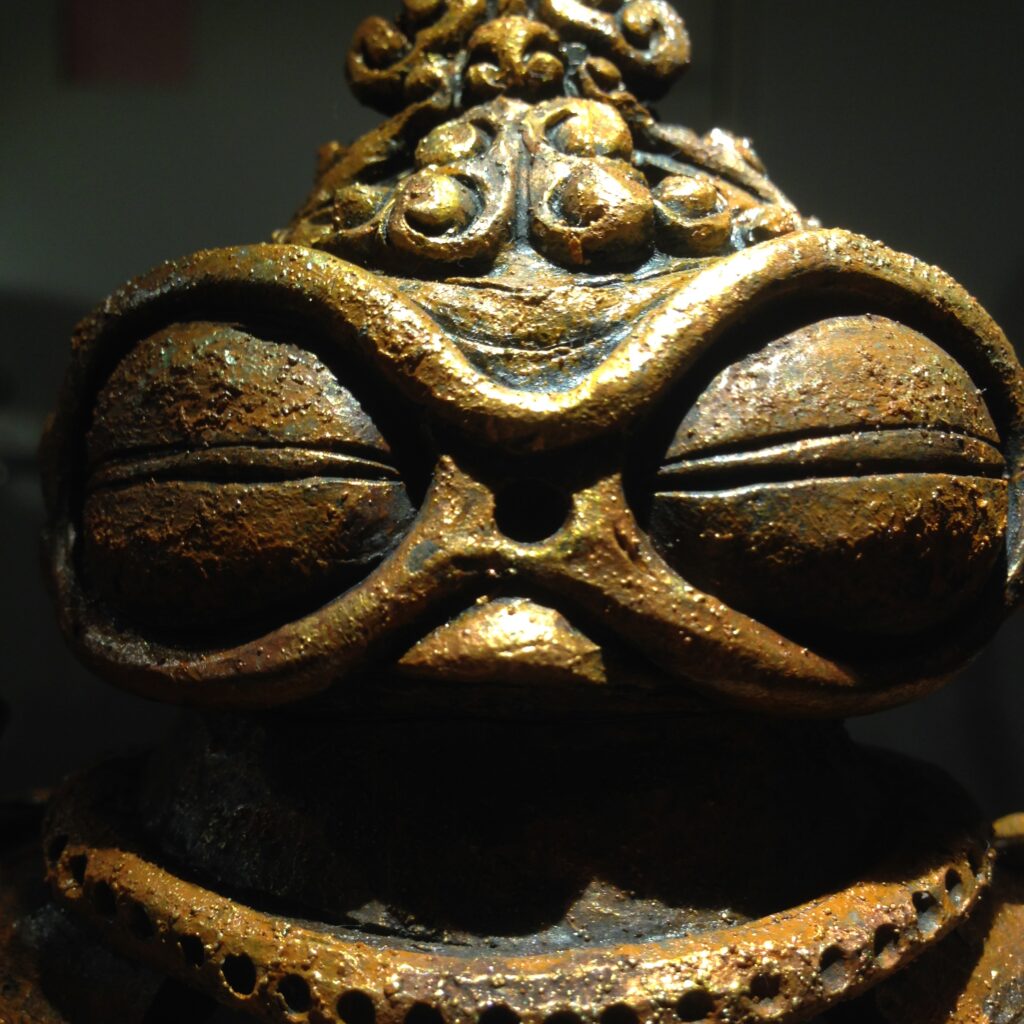
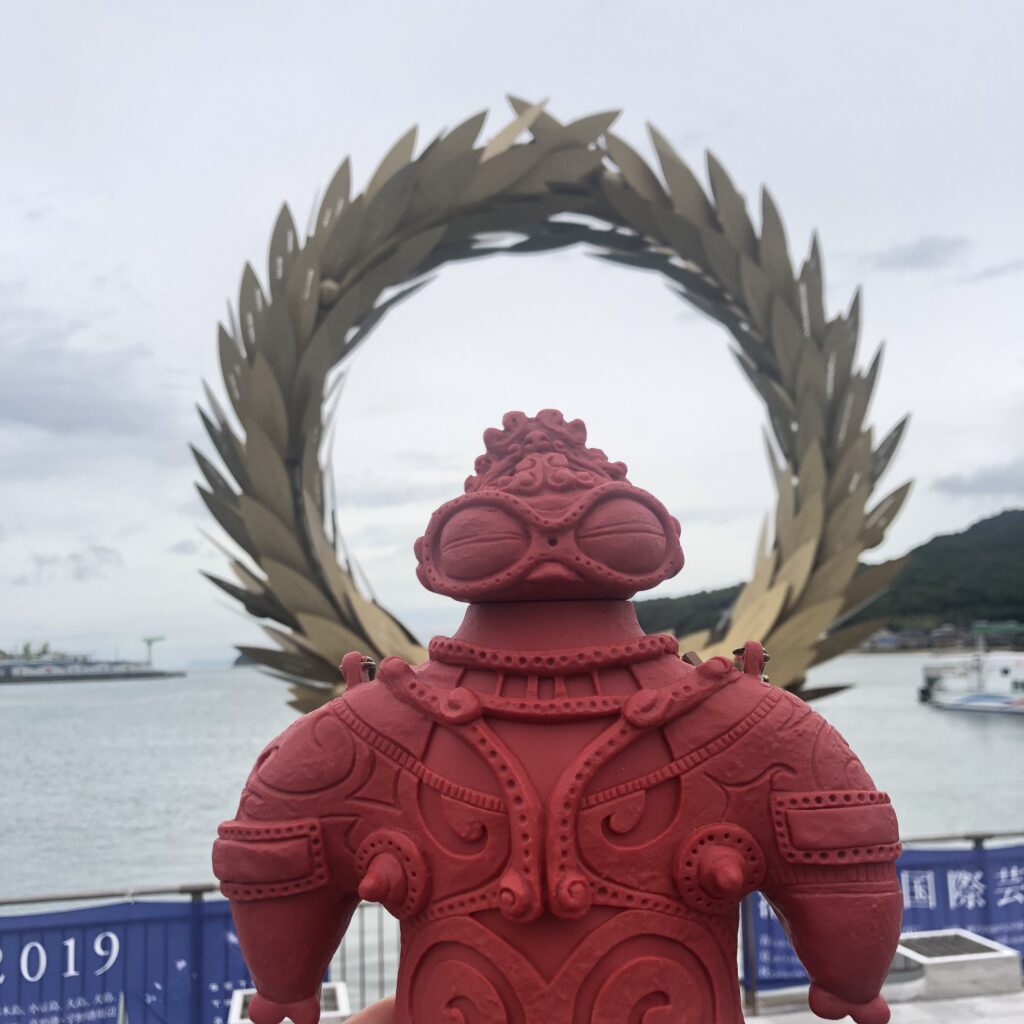
文:THAT IS GOOD編集部 藤田
TEXT : THAT IS GOOD editorial department, Fujita